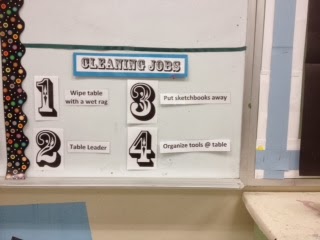A-B-C Activity (not a real official name, but oh well)
How it works....
I am going to do a lesson on George Segal and my students are going to create "tape people". I am sure you have heard of this project before, if not I will be sharing photos and such in the following weeks. Generally, when I introduce a project I start off by showing the students a PowerPoint Presentation about the projects where I share artists, student work, professional artist work, etc. After I show the PPT, as and exit slip I am going to have the students complete this activity.
With their table they are going to write down words that can be associated with George Segal. The goal is for them to come up with at least 1 word for each letter of the alphabet. After the students have completed the paper (about 5 minutes or so). I will put my paper up on the projector and I will call on groups at random to tell me what they put for the first letter of the alphabet and then keep doing this until we have gotten through the entire alphabet. Then the tables can add these words to their sheet.
 |
| Here is the blank sheet before they begin. |
I would love to hear your input!
- How do you include Formative Assessments into your classroom?
- How do you tie the 'core' classes into your curriculum?







